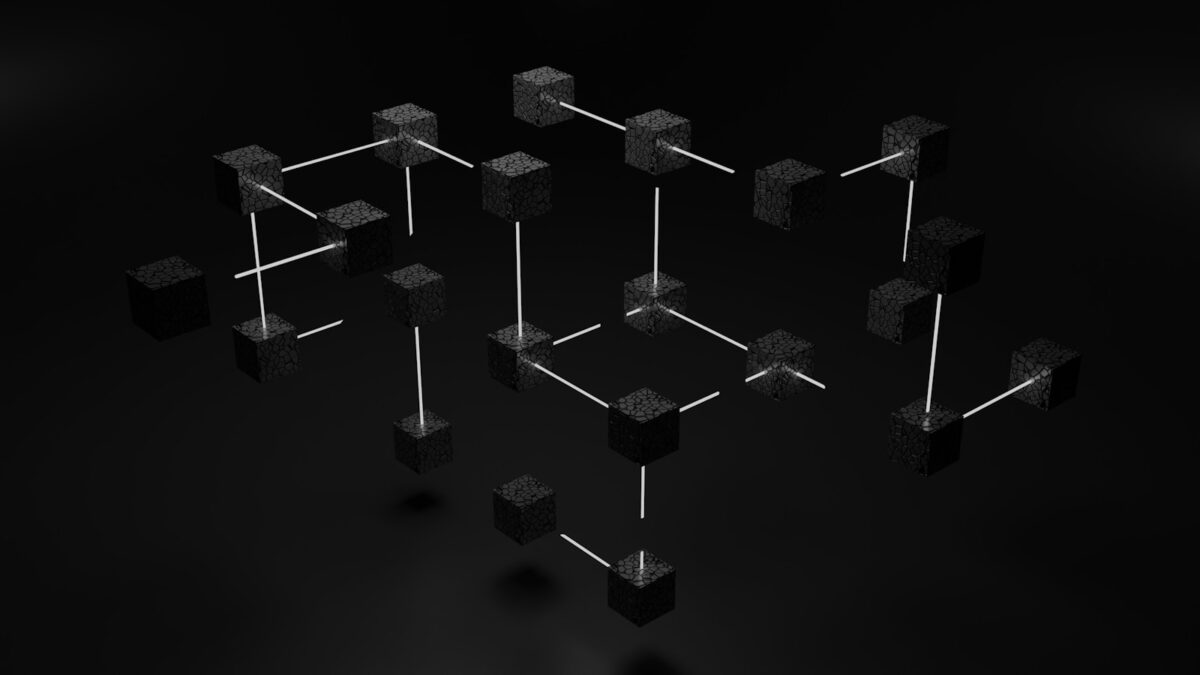
Blockchain rollup technology

Rollups significantly improve transaction throughput on Ethereum by bundling multiple operations off-chain and submitting succinct proofs or aggregated data back to the mainnet. This approach reduces congestion, lowers gas cost, and boosts network efficiency. Both optimistic and zk-rollup variants offer distinct trade-offs in validation speed and security assumptions.
Optimistic rollups assume transactions are valid by default, relying on a challenge period for fraud proofs. Their design supports general-purpose computation but introduces latency due to dispute windows. In contrast, zk-rollups generate cryptographic proofs that verify the correctness of batched transactions instantly, enhancing finality while demanding more complex computational resources.
The fundamental mechanism involves transaction bundling, which aggregates numerous user interactions into a single batch processed off the main chain. This consolidation drastically cuts per-transaction overhead, enabling scalable decentralized applications without compromising Ethereum’s base-layer security guarantees. Exploring these layer-2 solutions reveals how innovative consensus shortcuts unlock new possibilities for blockchain performance optimization.
Blockchain Rollup Technology Understanding
Layer-2 solutions such as rollups address the pressing challenge of scaling transaction throughput beyond the limitations of base chains. By bundling multiple off-chain transactions into a single aggregated proof submitted on-chain, these mechanisms significantly reduce cost and improve operational efficiency. The key advantage lies in minimizing on-chain data load while maintaining security guarantees derived from the underlying protocol.
The two predominant paradigms within this category include optimistic rollups and zk-rollups, each employing distinct validation methodologies. Optimistic approaches assume correctness by default and rely on fraud proofs to detect invalid states post-factum, whereas zk-rollups generate succinct zero-knowledge proofs that validate every batch of transactions prior to commitment. This divergence impacts finality times, dispute resolution processes, and computational overhead.
Mechanics and Comparative Analysis of Layer-2 Aggregation Methods
Optimistic solutions achieve scalability by aggregating transactions off-chain with minimal immediate verification. Their reliance on challenge periods allows for dispute submissions but introduces latency before transaction finalization. For example, Optimism’s implementation targets Ethereum scalability by enabling transaction throughput increases up to 100x while reducing gas fees by approximately 10 to 20 times. However, users must wait several minutes for withdrawal confirmation due to fraud-proof windows.
Zk-rollups, conversely, leverage cryptographic proofs (notably zk-SNARKs or zk-STARKs) that attest to the validity of large batches instantaneously upon submission. StarkWare’s solution demonstrates this by compressing thousands of transactions into a single proof with sub-second verification times on Ethereum mainnet. The trade-off involves higher computational resources during proof generation but substantially lowers confirmation delays and boosts security through cryptographic guarantees rather than economic incentives alone.
- Bundling: Both methods reduce on-chain congestion via aggregation but differ in trust assumptions and verification costs.
- Cost efficiency: zk-rollups typically incur higher upfront computation but achieve lower long-term gas expenditures per transaction compared to optimistic counterparts.
- Security models: Optimistic relies on economic penalties for fraud detection; zk-rollups use mathematical proofs ensuring state correctness at all times.
The practical deployment of these approaches varies according to application requirements. High-frequency decentralized exchanges benefit from zk-rollups’ rapid settlement capabilities, while platforms prioritizing composability with existing smart contracts might prefer optimistic frameworks given their EVM compatibility. Experimentation continues to refine hybrid designs combining elements of both paradigms to optimize scalability without compromising user experience or decentralization.
The continuous evolution of these second-layer protocols invites further investigation into their integration with base layer upgrades such as sharding or new consensus algorithms. Researchers are encouraged to experimentally analyze performance metrics including throughput gains, latency variation under load, and cost per transaction across various implementations. Understanding how different bundling strategies affect network congestion can yield actionable insights for architects designing scalable distributed ledgers aligned with diverse operational demands.
How Rollups Reduce Gas Fees
The primary mechanism by which rollups decrease gas fees on Ethereum involves executing multiple transactions off the main chain and then submitting a single aggregated proof back to Layer-1. This process, known as bundling, significantly lowers the cost per transaction by distributing the fixed Layer-1 overhead across many operations. By compressing transaction data and reducing on-chain calldata, these solutions optimize throughput without compromising security.
Layer-2 implementations such as optimistic rollups and zk-rollups apply distinct validation techniques, yet both achieve scaling by minimizing direct interaction with the Ethereum base layer. Optimistic systems assume validity of state transitions unless challenged within a fraud-proof window, while zk-rollups generate cryptographic proofs that confirm correctness instantly. This divergence impacts latency and finality but equally contributes to improved transaction efficiency and reduced user expenses.
Mechanisms Behind Cost Reduction
In optimistic constructions, multiple transactions are collected and executed off-chain before publishing compressed data summaries on Ethereum. This bundling reduces the volume of calldata stored on-chain, which directly correlates with gas consumption since calldata gas costs dominate Layer-1 fees. Consequently, each individual transaction pays only a fraction of the original Layer-1 cost due to shared resource usage.
Zk-rollups further enhance efficiency through succinct zero-knowledge proofs that verify large batches of transactions simultaneously. These proofs replace extensive computation with minimal verification steps on Ethereum, substantially lowering computational demand and thus lowering gas fees. Empirical data shows zk-rollup solutions can reduce per-transaction costs up to 90% compared to native Layer-1 execution.
- Transaction batching: Aggregating hundreds or thousands of transactions into single data submissions.
- Data compression: Encoding state changes compactly to minimize calldata size.
- Off-chain computation: Executing complex logic externally to avoid expensive on-chain operations.
The scalability achieved also alleviates network congestion during peak times when gas prices spike dramatically. By offloading activity from Ethereum’s mainnet, these mechanisms maintain consistent performance and predictable fee structures for users engaging in decentralized finance (DeFi) protocols or NFT marketplaces.
This analytical comparison reveals how different approaches balance cost savings against usability constraints. Developers choosing between optimistic or zk-based options must weigh factors like latency tolerance and implementation complexity alongside anticipated fee reductions.
The continuous evolution of these scaling solutions is supported by extensive experimental research that tests throughput under varying workloads and network conditions. Recent case studies demonstrate sustained improvement in transactional capacity reaching thousands per second while maintaining security guarantees anchored in Ethereum’s consensus layer. Such findings invite deeper inquiry into hybrid architectures combining advantages from both paradigms for further gas optimization strategies.
Comparing Optimistic Versus ZK Rollups
Optimistic rollups operate by assuming transactions are valid by default, only triggering verification processes in response to disputes. This approach enables significant scaling of Ethereum by bundling multiple transactions into a single batch processed off-chain, reducing the load on the main network. The efficiency gain comes from minimizing on-chain computation and data storage, relying instead on fraud proofs submitted within a challenge period. Such architecture is particularly suited for applications with lower transaction finality requirements, as it introduces latency due to the dispute window, which can extend up to one week depending on protocol parameters.
ZK-rollups, conversely, employ zero-knowledge proofs to validate every bundled transaction cryptographically before committing state changes to Ethereum’s base layer. This method produces succinct validity proofs that guarantee correctness without revealing transaction details, enhancing privacy alongside throughput. The immediate finality of transactions within ZK-rollups eliminates waiting periods characteristic of optimistic solutions. However, generating these proofs demands significant computational resources off-chain, which can affect throughput and increase hardware requirements for operators.
The trade-offs between these two approaches manifest clearly in their respective impacts on layer-2 scaling. Optimistic systems excel at supporting complex smart contracts and arbitrary code execution because they do not require specialized circuits for proof generation. Projects like Arbitrum and Optimism exemplify this flexibility but face challenges related to longer withdrawal times and potential security risks during dispute resolution phases. In contrast, zk-rollups such as zkSync and StarkNet deliver faster finality and higher throughput for simpler transaction types but require advanced cryptographic engineering to support general-purpose computations efficiently.
A detailed comparison reveals that efficiency gains depend heavily on use case characteristics: optimistic bundling favors scenarios prioritizing compatibility with existing Ethereum tooling and developer ecosystems, while zk-rollups offer superior performance where rapid settlement and data compression are paramount. For instance, DeFi platforms with frequent state updates might benefit more from zk-based solutions due to minimized latency, whereas NFT marketplaces may prefer optimistic frameworks for their extensibility. Evaluating gas cost reductions further supports this division; zk-rollups reduce calldata footprint significantly through succinct proofs, while optimistic chains rely on cheaper calldata but incur overhead during fraud proof disputes.
Integrating Rollups With Layer 1 Chains
Effective integration of zk-rollups and optimistic solutions with layer-1 chains like Ethereum significantly enhances transaction throughput while reducing operational costs. By offloading execution to layer-2 environments, these approaches bundle multiple transactions into single proofs or aggregated batches submitted back to the base layer, optimizing both cost and efficiency. This process maintains security guarantees inherent in the underlying protocol but alleviates congestion and high gas fees.
Layer-2 scaling via zk-rollups employs succinct zero-knowledge proofs to validate state transitions without revealing individual transaction data, enabling rapid finality and near-instant settlement on Ethereum. Conversely, optimistic methods assume correctness initially and verify through fraud proofs if disputes arise, trading off some latency for simpler computation. Each technique necessitates tailored integration strategies that consider cost implications, throughput targets, and compatibility with existing infrastructure.
Technical Considerations for Seamless Integration
Bundling transactions effectively requires robust communication channels between the main chain and secondary execution environments. Smart contract interfaces must support compressed calldata formats to minimize submission costs on Ethereum. For instance, zk-rollups utilize recursive proof aggregation to compress thousands of transactions into a single proof verified by an on-chain verifier contract. This dramatically lowers per-transaction gas consumption compared to direct mainnet execution.
Optimistic aggregators rely heavily on challenge-response mechanisms embedded within layer-1 contracts. The design of these contracts influences how quickly invalid batches can be disputed and reverted without burdening the primary chain’s resources excessively. Balancing dispute windows length with user experience remains an ongoing experimental area; shorter windows reduce finality time but increase computational overhead due to more frequent challenges.
Empirical data from projects such as Arbitrum (optimistic) and zkSync (zero-knowledge) illustrate divergent trade-offs in throughput scalability versus confirmation times. Arbitrum achieves several thousand transactions per second at moderate cost but introduces delays up to one week for full withdrawal finalization due to its dispute period requirements. zkSync demonstrates sub-second finality with higher cryptographic complexity but offers superior cost-efficiency under heavy load by minimizing calldata size.
Future research avenues include exploring hybrid models that leverage zero-knowledge succinctness alongside optimistic verification fallback layers, aiming for resilient yet performant systems integrated tightly with Ethereum’s consensus rules. Additionally, advancements in bundling algorithms that dynamically optimize batch sizes based on network conditions show promise in further reducing latency and expense. These experimental directions invite practitioners to test varying configurations experimentally while monitoring metrics such as transaction inclusion rate, gas expenditure per operation, and end-user withdrawal latency.
Security Models Behind Rollups
Security in rollups hinges primarily on the interplay between data availability and fraud or validity proofs, defining how trust is distributed between layer-1 chains like Ethereum and the secondary processing layers. zk-rollups employ succinct zero-knowledge proofs to validate every bundled transaction off-chain before submitting compressed proofs on-chain, ensuring cryptographic finality and near-instant verification without requiring full re-execution of all transactions. This model drastically reduces attack vectors by eliminating reliance on challenge periods, thus maintaining high security while boosting throughput.
Optimistic variants adopt a different approach by assuming transaction bundles are valid by default, introducing a window during which participants can submit fraud proofs if discrepancies arise. This dispute resolution mechanism leverages economic incentives to deter malicious activity but introduces latency due to challenge periods that can last several days. The trade-off impacts cost-efficiency and user experience but preserves security by enabling Ethereum’s consensus to arbitrate disputes through on-chain verification only when necessary.
Data availability plays a pivotal role in both designs since missing or withheld data could undermine trust assumptions. zk-based systems publish compressed state roots alongside zero-knowledge proofs, ensuring state correctness independently from data availability guarantees. Meanwhile, optimistic solutions require full transaction calldata on-chain to enable third parties to reconstruct state transitions during challenges. Here, bundling transactions efficiently helps maintain low costs while satisfying data accessibility requirements critical for sound validation.
The cost implications between these two paradigms stem largely from their distinct verification strategies. zk-rollups demand intensive computation off-chain for generating validity proofs but achieve minimal gas expenditure per transaction when posting them on Ethereum’s mainnet. Conversely, optimistic implementations save computational effort initially but incur higher gas fees due to calldata posting and extended challenge windows necessitating ongoing monitoring efforts. Selecting an appropriate security model depends heavily on application-specific throughput needs versus tolerance for confirmation delays.
An instructive case study lies in comparing zkSync’s zk-rollup with Optimism’s optimistic approach on Ethereum scaling metrics. zkSync demonstrates sub-second finality and lower cumulative gas usage per bundled transaction through advanced recursive proof schemes, whereas Optimism achieves broader compatibility with existing smart contracts at the expense of multi-day withdrawal times imposed by its fraud-proof architecture. Both approaches exemplify how bundling transactions off mainnet enhances efficiency while relying on layered security guarantees rooted in cryptographic proofing or game-theoretic dispute mechanisms.
Scaling DApps Using Rollups: Technical Insights and Future Directions
Layer-2 solutions employing bundling mechanisms significantly reduce transaction costs on Ethereum by aggregating multiple operations into single proofs or batches. Both optimistic and zk-rollups demonstrate distinct approaches to increasing throughput: optimistic variants rely on fraud proofs to maintain security, while zk-rollups utilize succinct zero-knowledge proofs for immediate finality, offering enhanced efficiency in data verification.
Integrating these methods allows decentralized applications to handle exponential growth in user demand without compromising decentralization or security. The continuous evolution of zk-rollup cryptography and fraud-proof optimization points toward further improvements in latency and cost-effectiveness, pushing the boundaries of scalable execution environments.
Key Technical Takeaways and Outlook
- Transaction Bundling: Aggregating large volumes of transactions off-chain reduces load on Ethereum’s base layer, directly decreasing gas fees while preserving trust assumptions.
- Security Models: Optimistic rollups depend on challenge windows that introduce delays but enable broader compatibility with existing smart contracts; zk-rollups provide instant validity proofs at the expense of more complex proof generation algorithms.
- Efficiency Gains: Zero-knowledge proof systems are rapidly advancing, enabling smaller proof sizes and faster verification times, which translate into lower operational costs for DApps.
- Interoperability Prospects: Future designs aim to standardize data availability layers and cross-rollup communication protocols, facilitating seamless asset transfer and composability across different scaling networks.
The trajectory of these second-layer constructs suggests a paradigm shift where high-throughput decentralized applications can coexist with Ethereum’s secure consensus without incurring prohibitive expenses. Researchers and developers should prioritize experimentation with hybrid models combining optimistic validation speed with zk-based cryptographic assurances to find optimal trade-offs tailored for specific application domains. Exploring novel state compression techniques and adaptive batching strategies could unlock unprecedented scalability thresholds, making mainstream adoption feasible globally.
This ongoing innovation invites deeper investigation into how layered aggregation influences system-wide decentralization metrics and long-term network sustainability. Examining real-world deployments will yield critical feedback loops necessary for refining design principles that balance cost, speed, security, and developer experience–core pillars underpinning the next generation of scalable distributed computing infrastructures.


